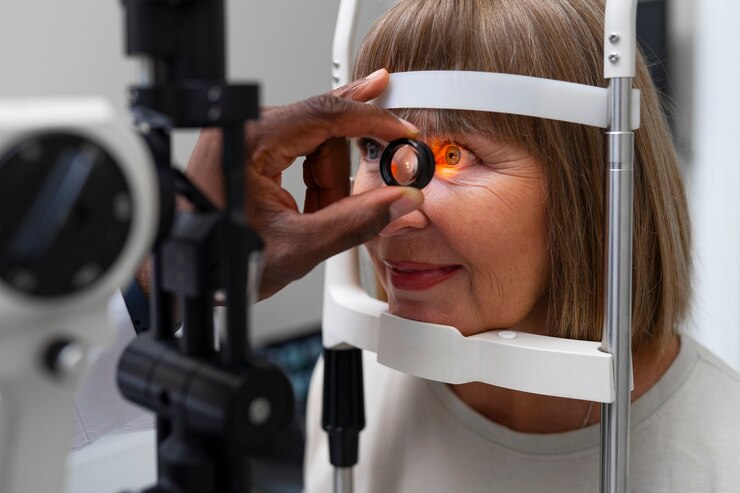Glaucoma Treatment and Early Detection: Why It’s Crucial for Vision Health
April 25, 2024
Have Any Questions?
Please contact us, if you have any queries
Categories

Vision is a precious gift that we often take for granted until it starts to diminish.
Glaucoma, a group of eye conditions that damage the optic nerve, can stealthily
rob individuals of their sight without any noticeable symptoms until it’s too
late. Understanding the importance of early detection and appropriate glaucoma treatment is vital for preserving vision and maintaining eye health.
The Silent Thief: Glaucoma’s Stealthy Progress
Glaucoma is often referred to as the “silent thief of sight” because it typically progresses slowly and without any noticeable symptoms in its early stages. The optic nerve, which is responsible for transmitting visual information from the eye to the brain, is gradually damaged by increased intraocular pressure. This damage can result in irreversible vision loss.
Why Early Detection Matters:
1. Vision Preservation:
Early detection of glaucoma allows for
timely intervention and treatment, preserving remaining vision and preventing
further damage. Regular eye check-ups, especially for those at higher risk, are
crucial for detecting glaucoma in its early stages.
2. Minimizing Visual Impairment:
With early detection, appropriate glaucoma
treatment can be initiated to control intraocular pressure and slow down the
progression of the disease. This significantly reduces the risk of visual
impairment, and blindness.
3. Quality of Life:
Vision loss due to glaucoma can impact daily activities and reduce the overall quality of life. Early treatment helps in maintaining independence and a higher quality of life for individuals affected by glaucoma.
4.Cost-Effective Intervention:
Early detection and treatment are more
cost-effective than managing advanced stages of glaucoma. Regular eye check-ups can identify the disease in its early phases, leading to less intensive and
costly interventions.
Glaucoma Treatment Approaches:
1. Eye Drops:
Prescription eye drops are commonly used to lower intraocular pressure by either reducing the production of fluid in the
eye or increasing its drainage.
2. Oral medications:
In some cases, oral medications may be
prescribed to complement the effects of eye drops in controlling intraocular
pressure.
3. Laser Therapy:
Laser treatments, such as trabeculoplasty, aim to improve the drainage of fluid from
the eye, thus lowering intraocular pressure.
4.Surgical Interventions:
In cases where other treatments are
ineffective, surgical procedures like trabeculectomy or implanting drainage
devices may be considered to improve fluid drainage.
Dr.Rani Menon Maxivision Eye Hospital: Leading the Way in Eye Care
In the pursuit of optimal eye health and cutting-edge eye care, Dr. Rani Menon Maxivision Eye Hospital stands as a beacon of expertise and compassion.
With a commitment to
early detection, accurate diagnosis, and personalized glaucoma treatment plans,
Dr. Rani Menon ensures that patients receive the highest quality of care.
Dr Rani Menon Maxivision Eye Hospital, under the guidance of Dr. Rani Menon, is equipped with
state-of-the-art facilities and a team of experienced professionals dedicated to providing comprehensive eye care services. From routine eye examinations to
advanced glaucoma treatments, they prioritize each patient’s vision health.
Regular eye check-ups are the first line of defence
against glaucoma and other sight-threatening conditions. By seeking the
expertise of professionals at Dr Rani Menon Maxivision Eye Hospital, individuals can take proactive steps towards preserving their vision and enjoying a life filled with clarity and visual well-being.
In the journey towards maintaining optimal eye health, early detection, and timely glaucoma treatment play pivotal roles.
Schedule your eye examination today and embrace a future
where your vision is safeguarded with the care and expertise provided at Dr. Rani Menon Maxivision Eye Hospital. Your eyes deserve the best, and we are
committed to delivering unparalleled eye care services.












